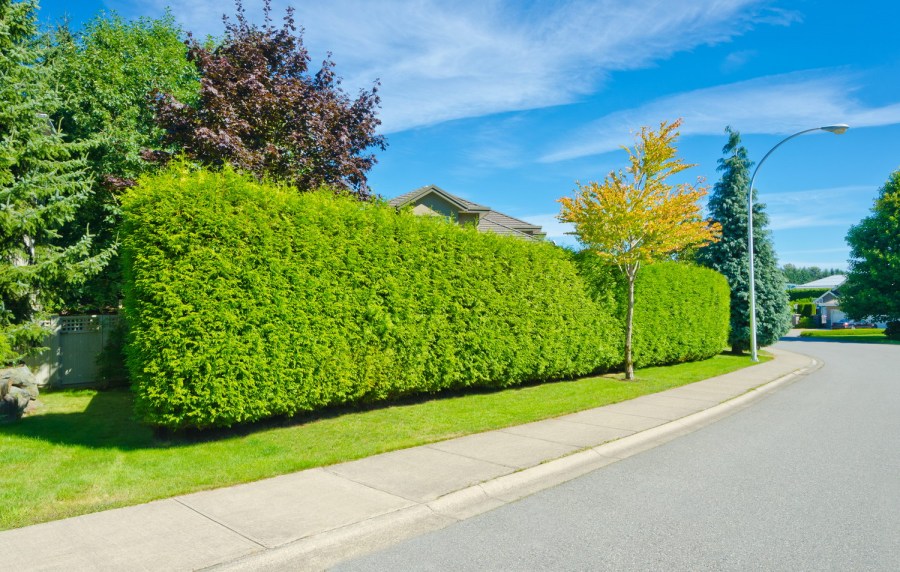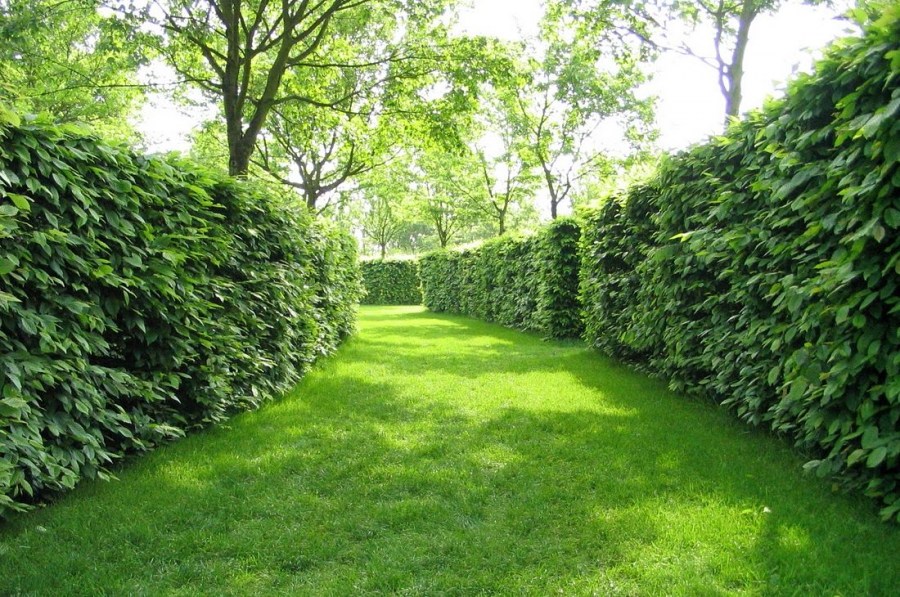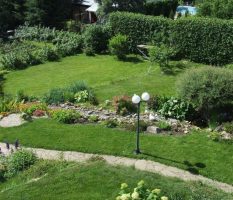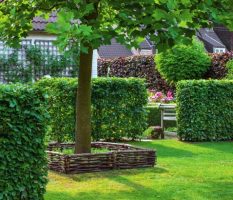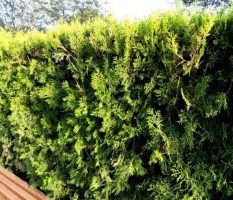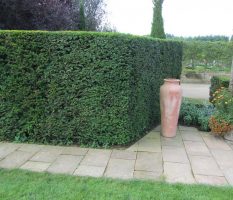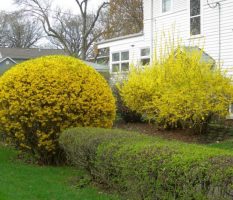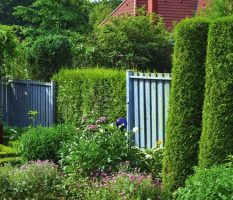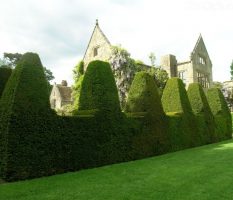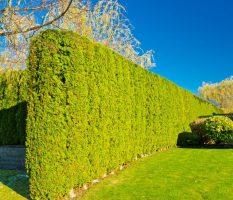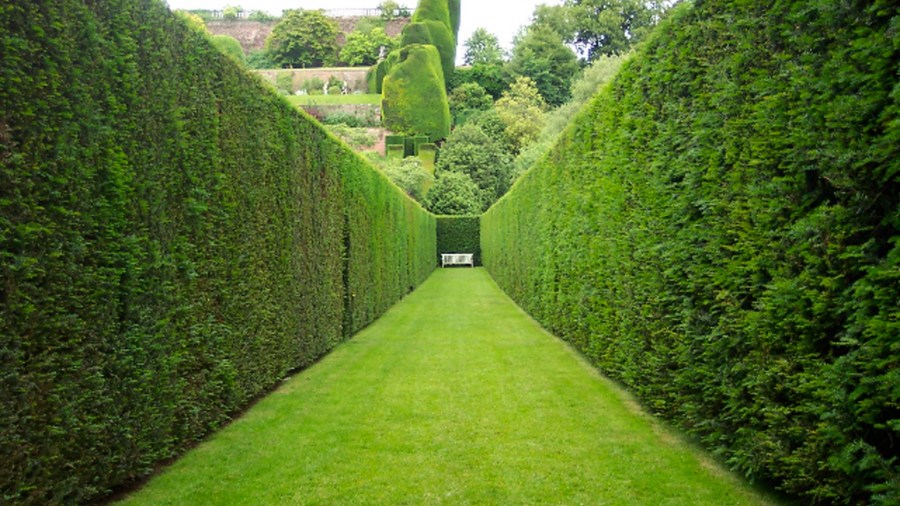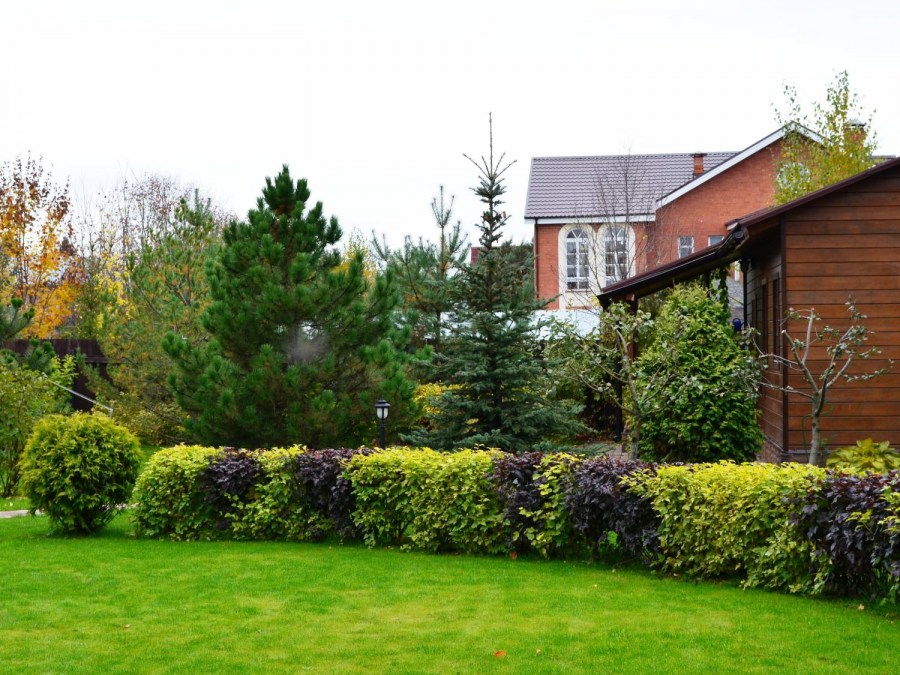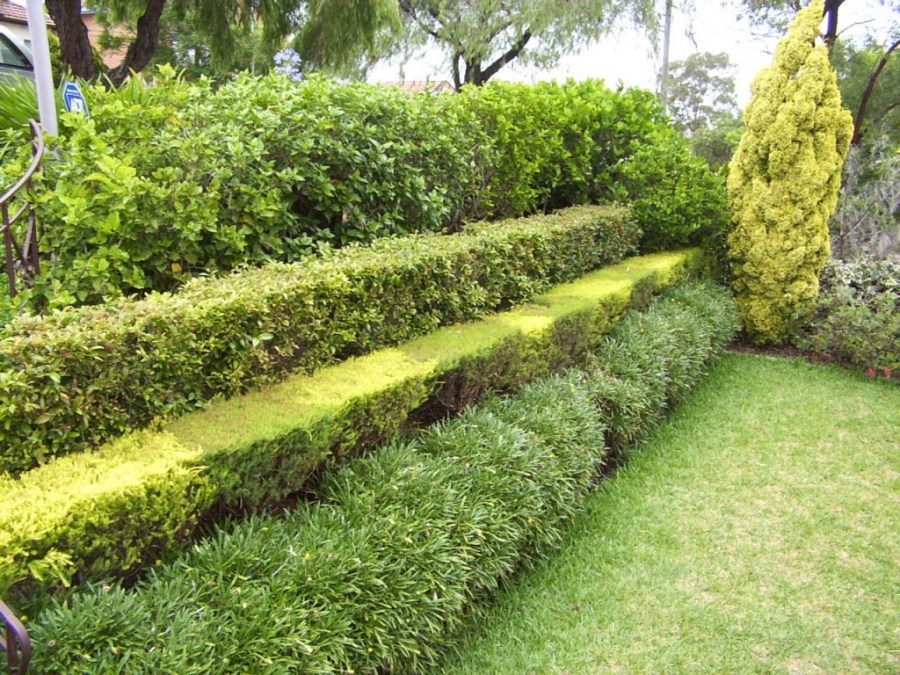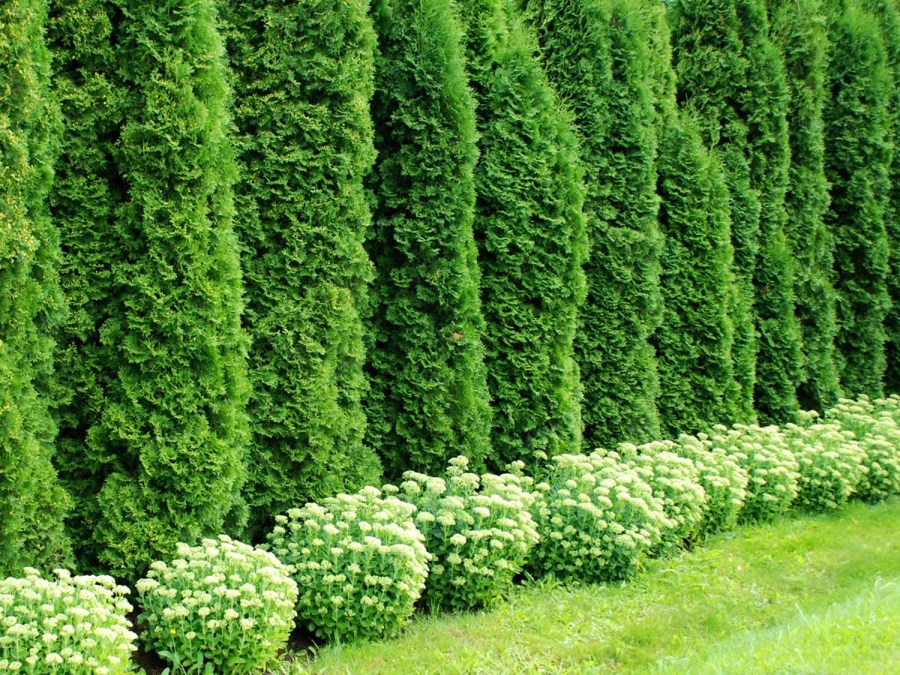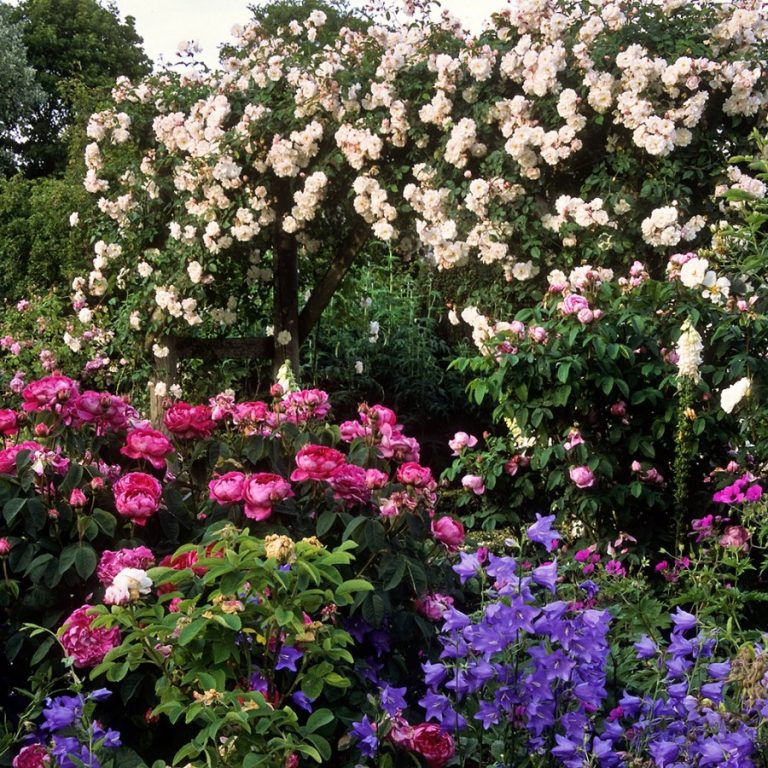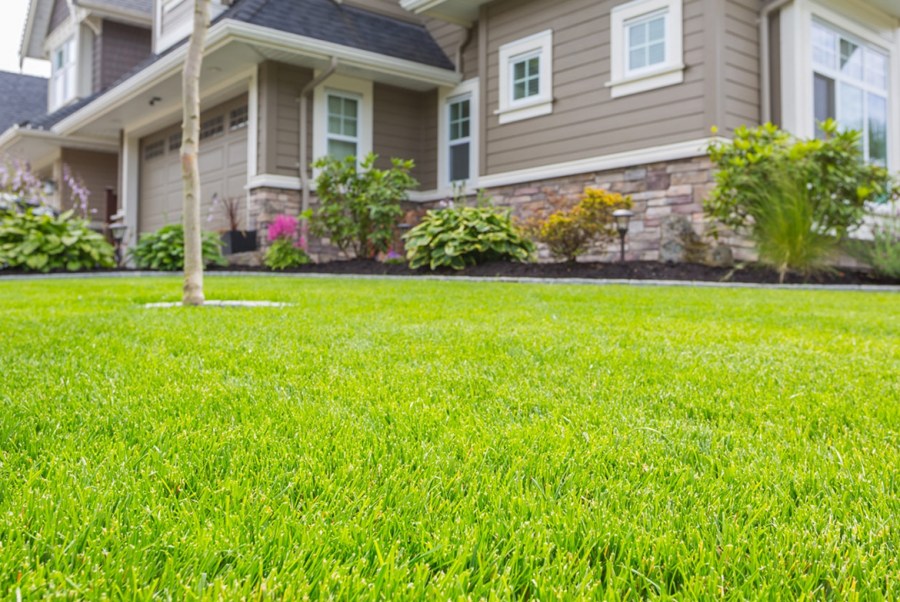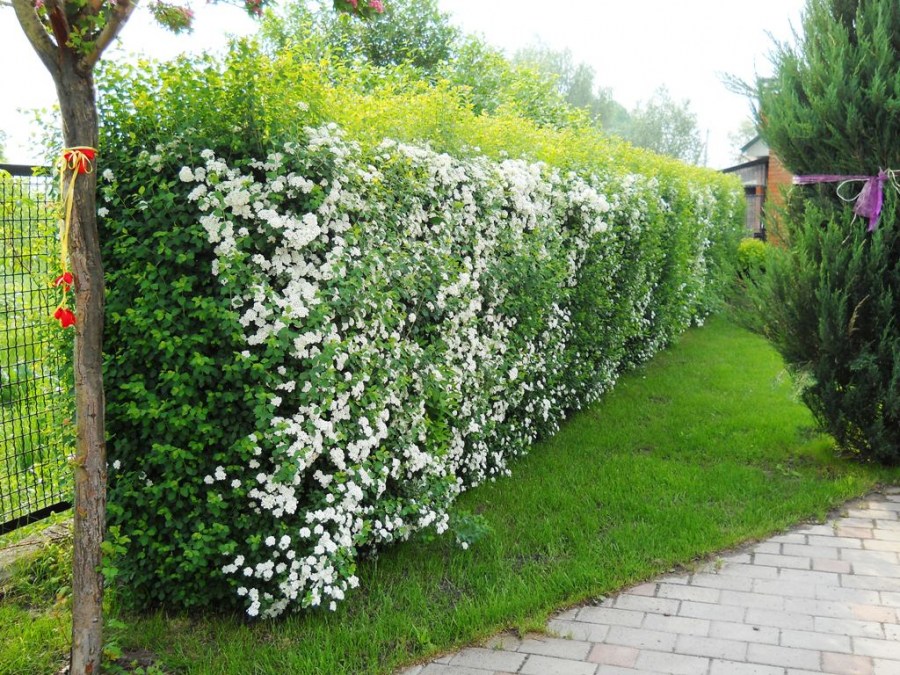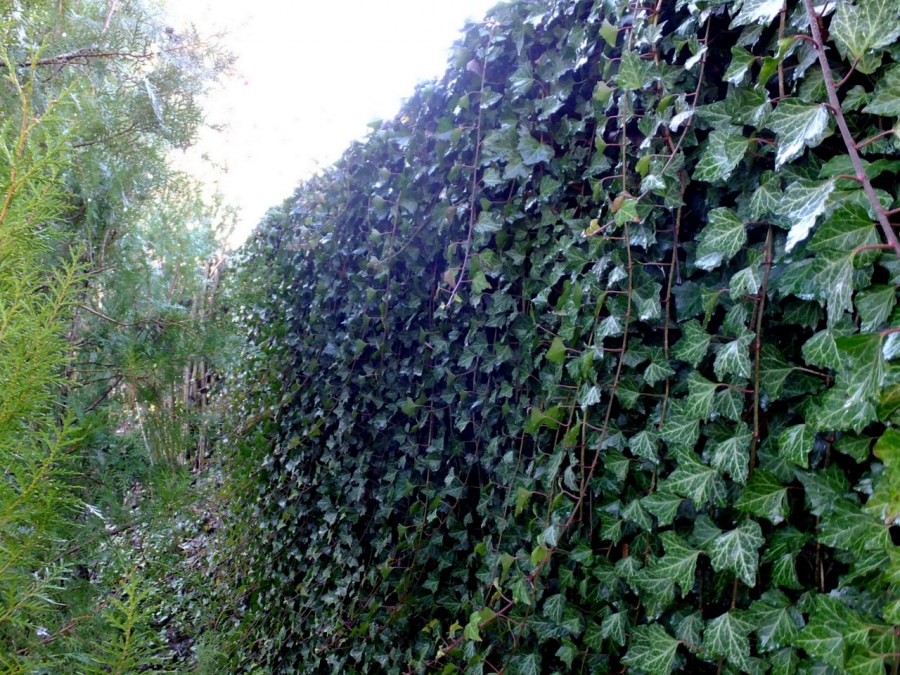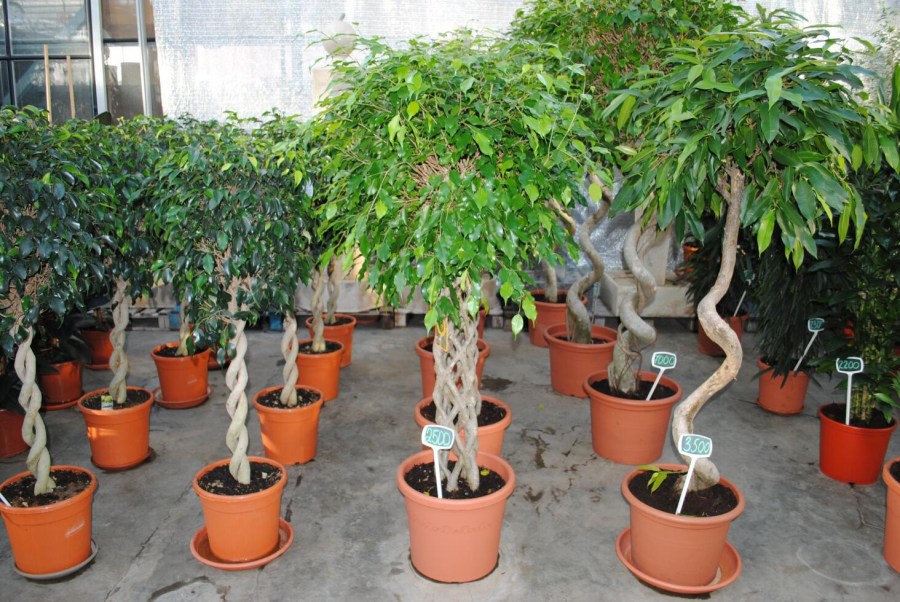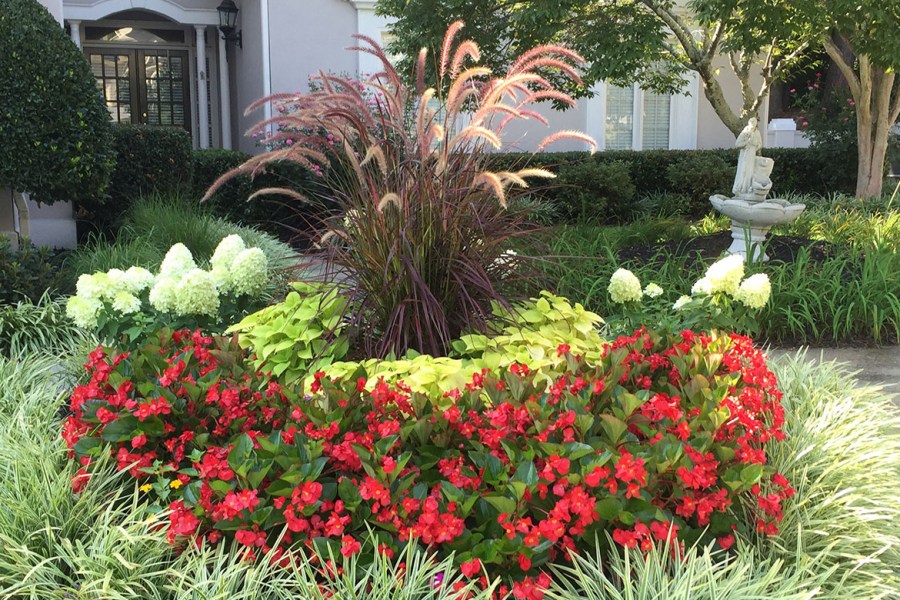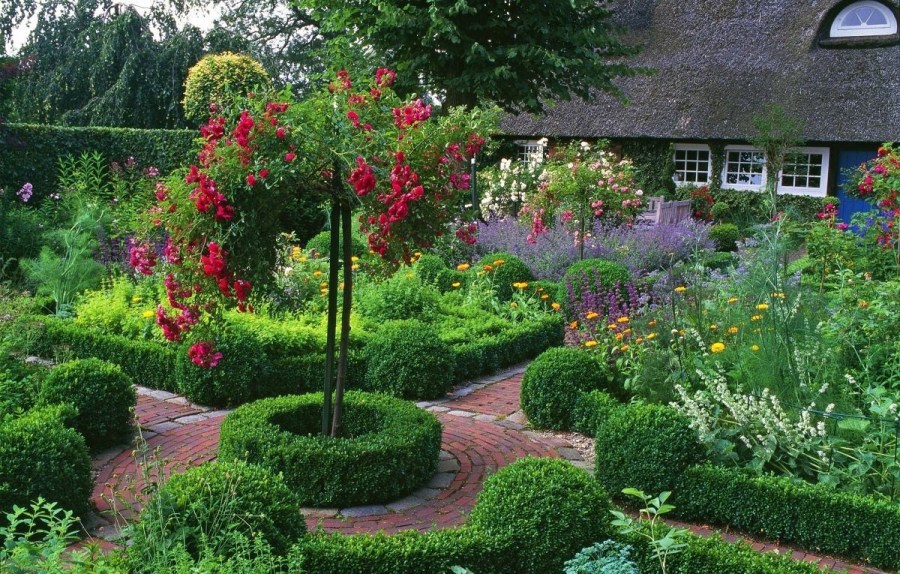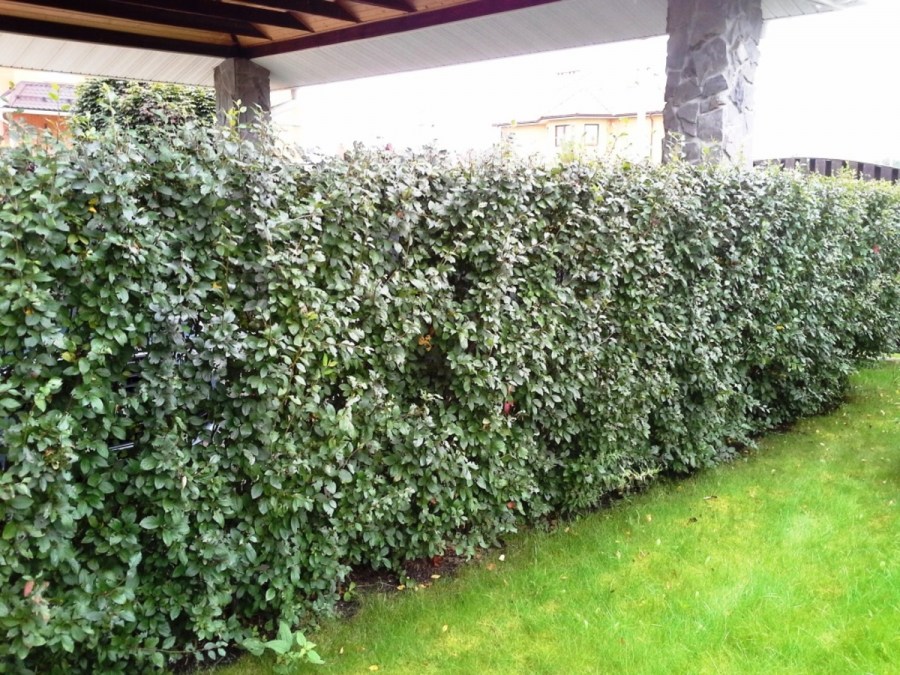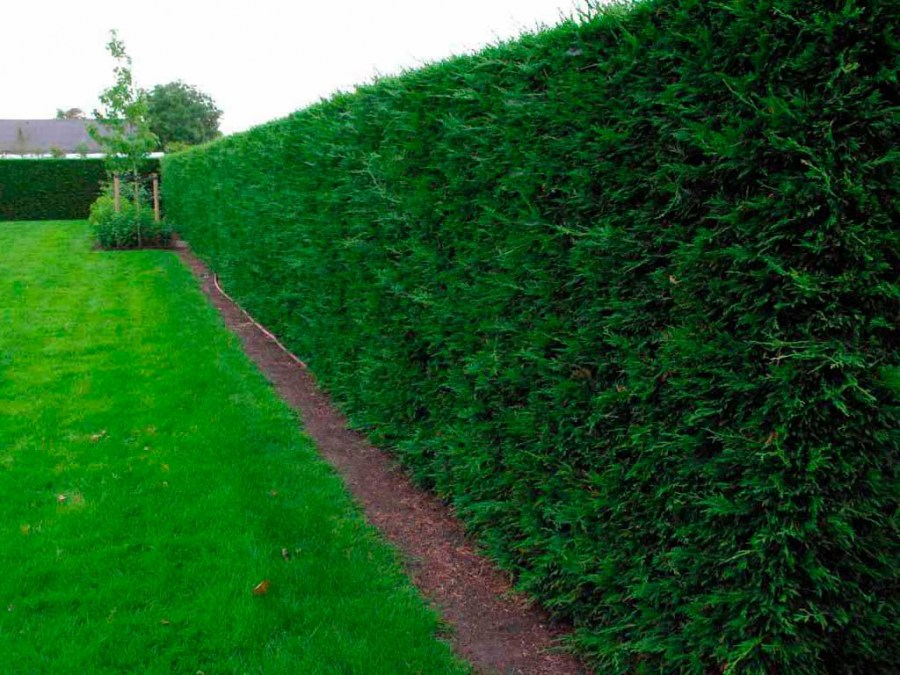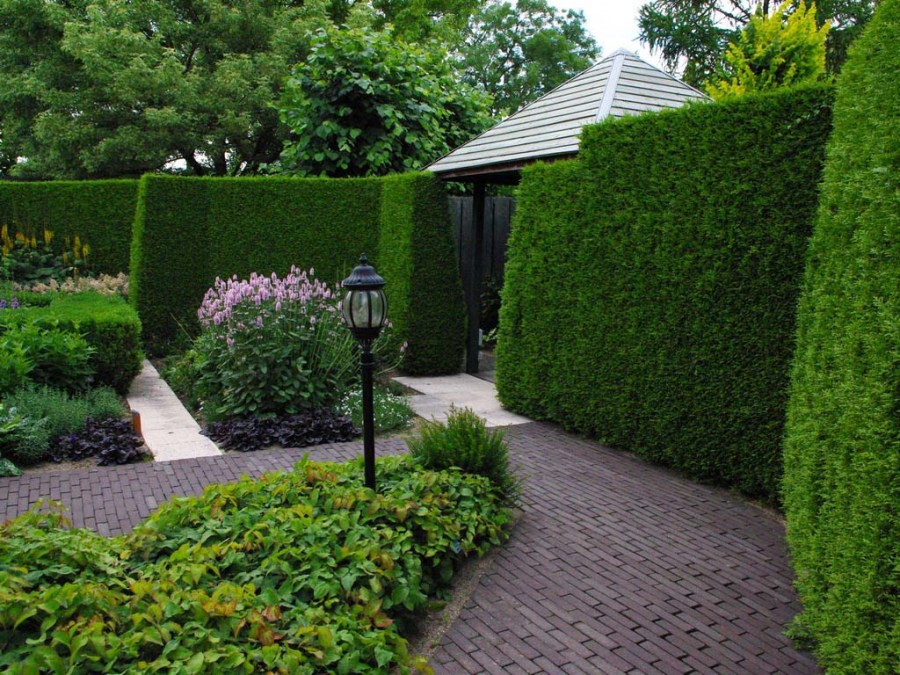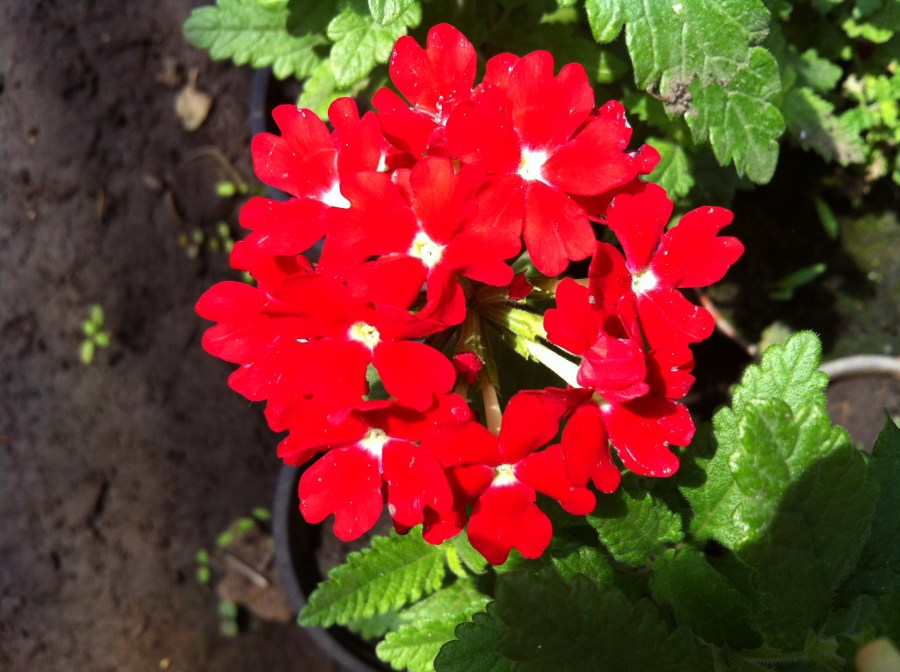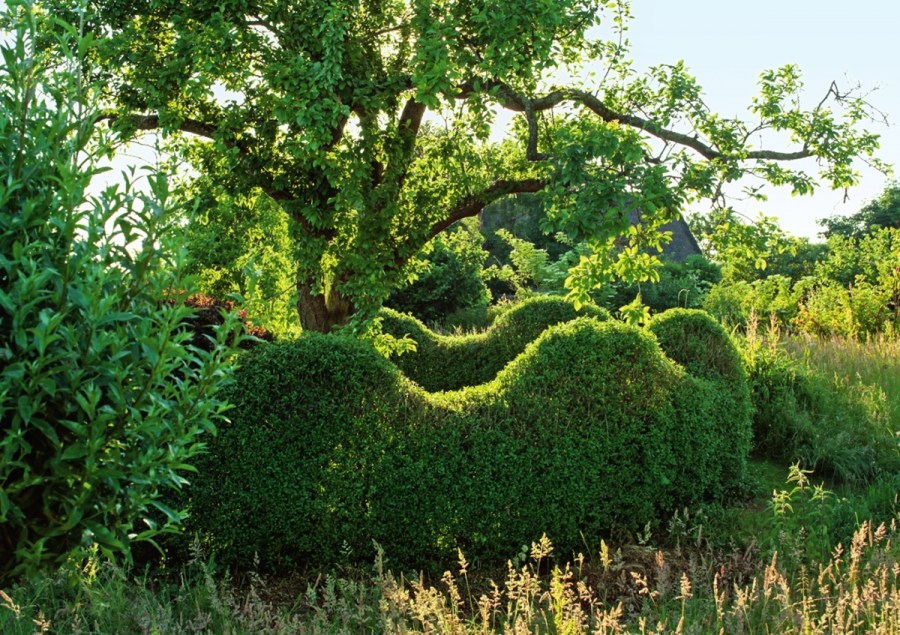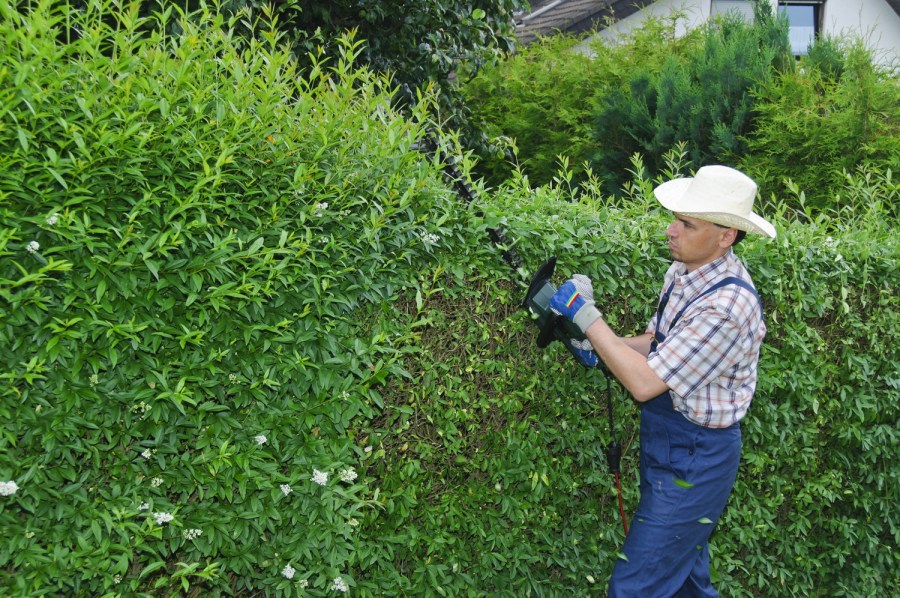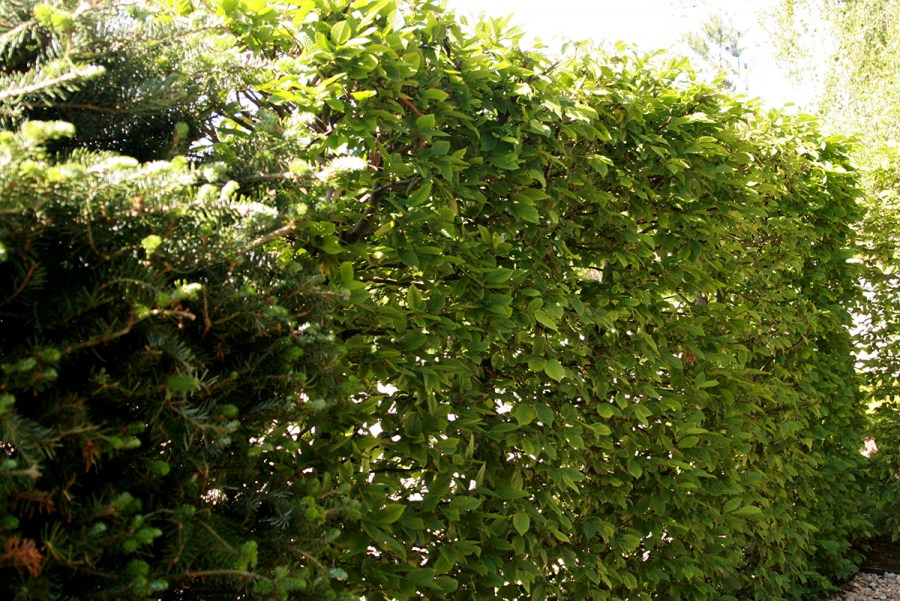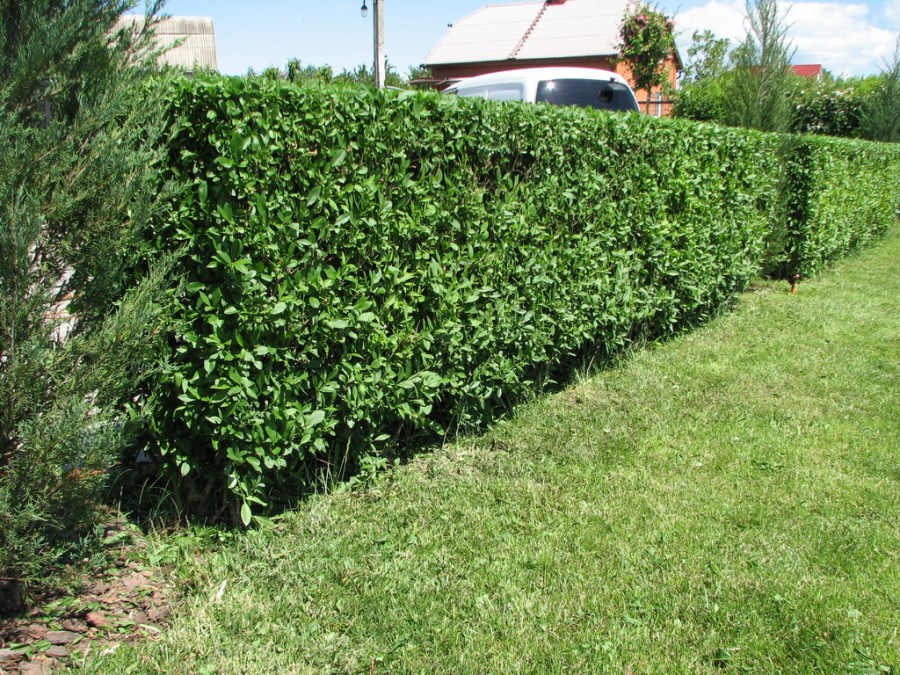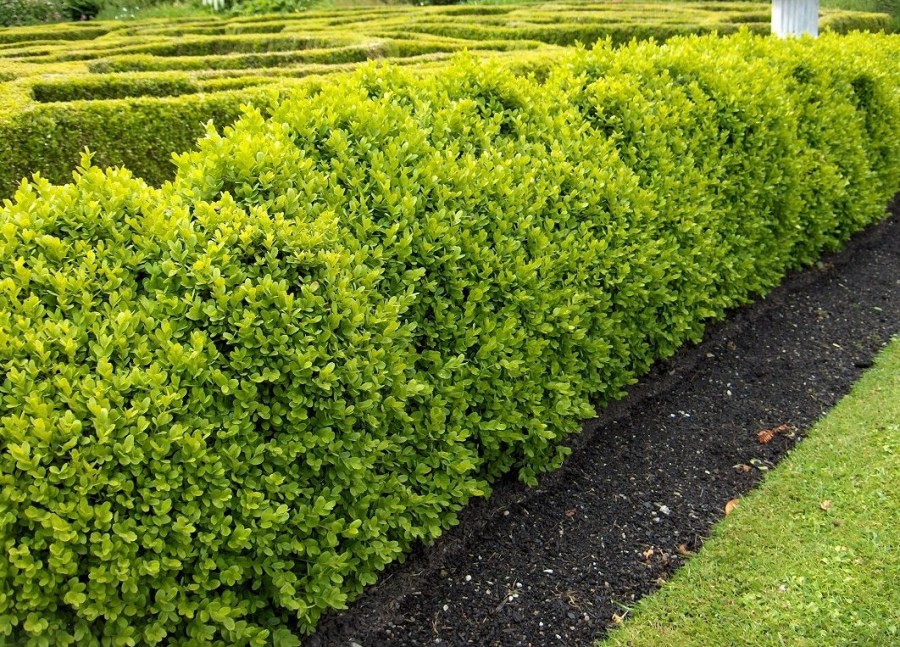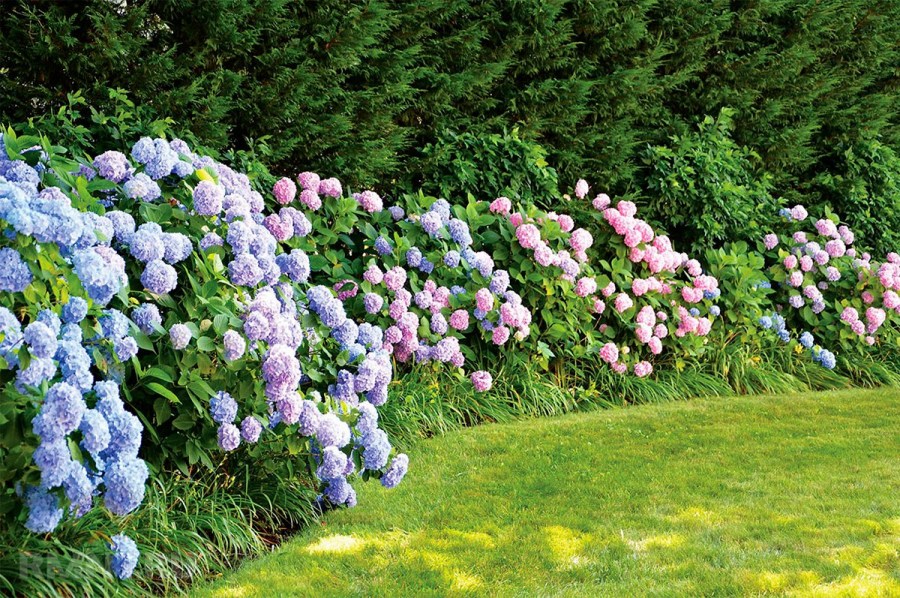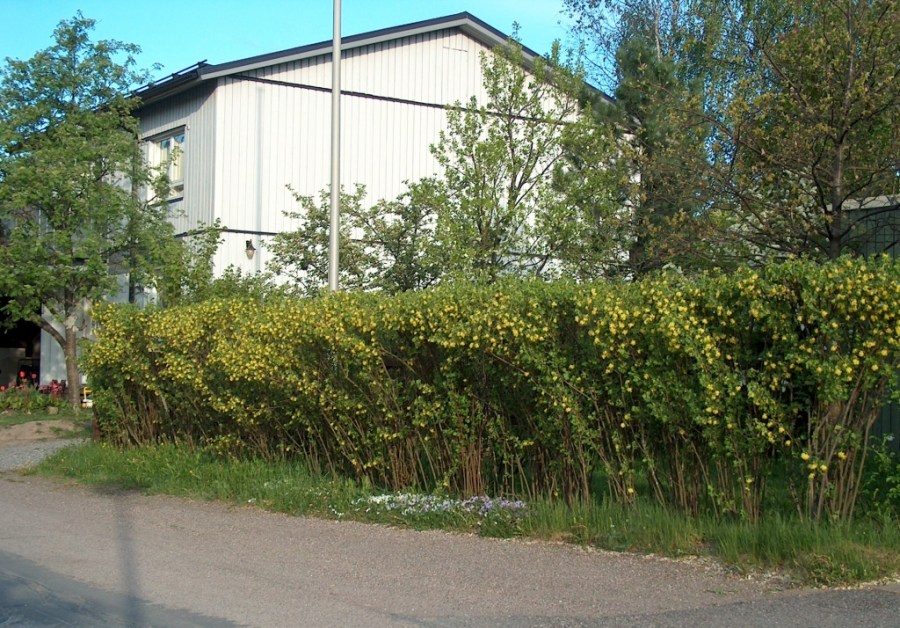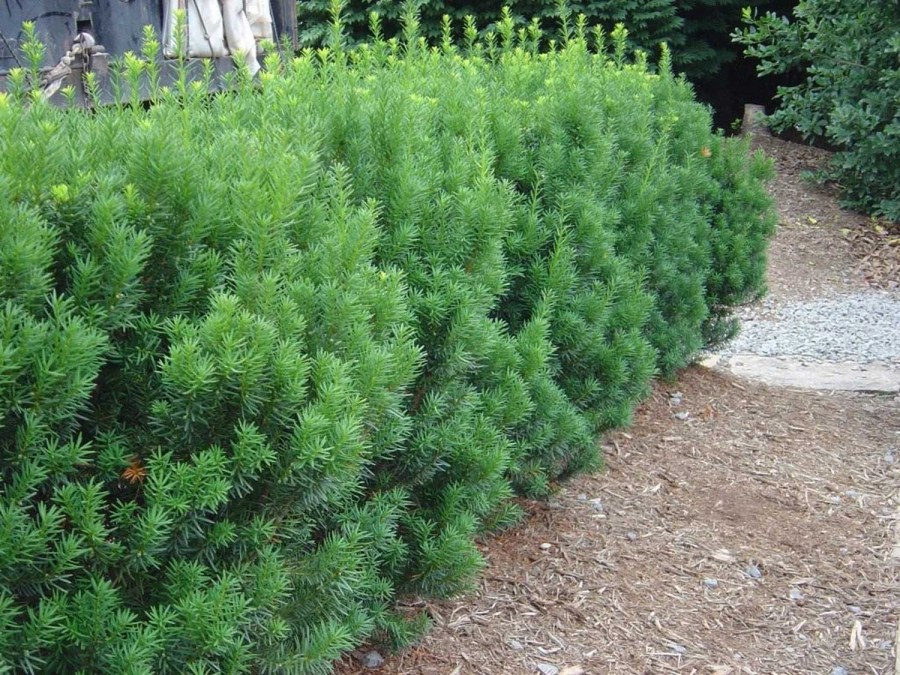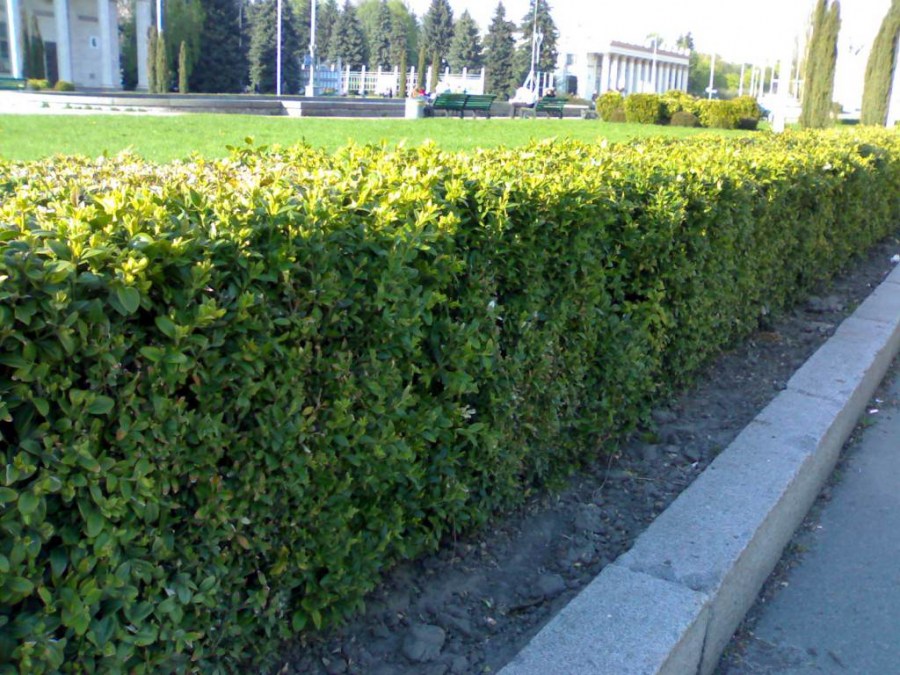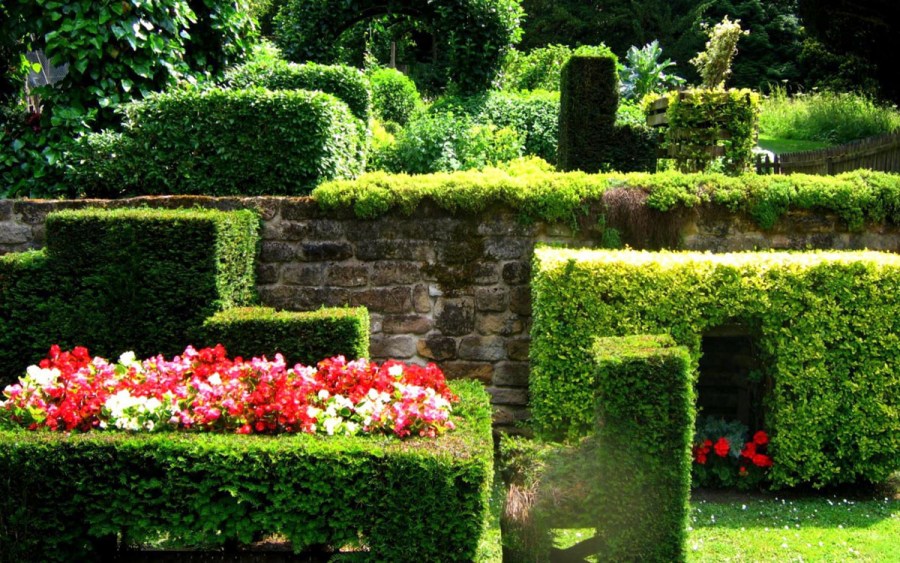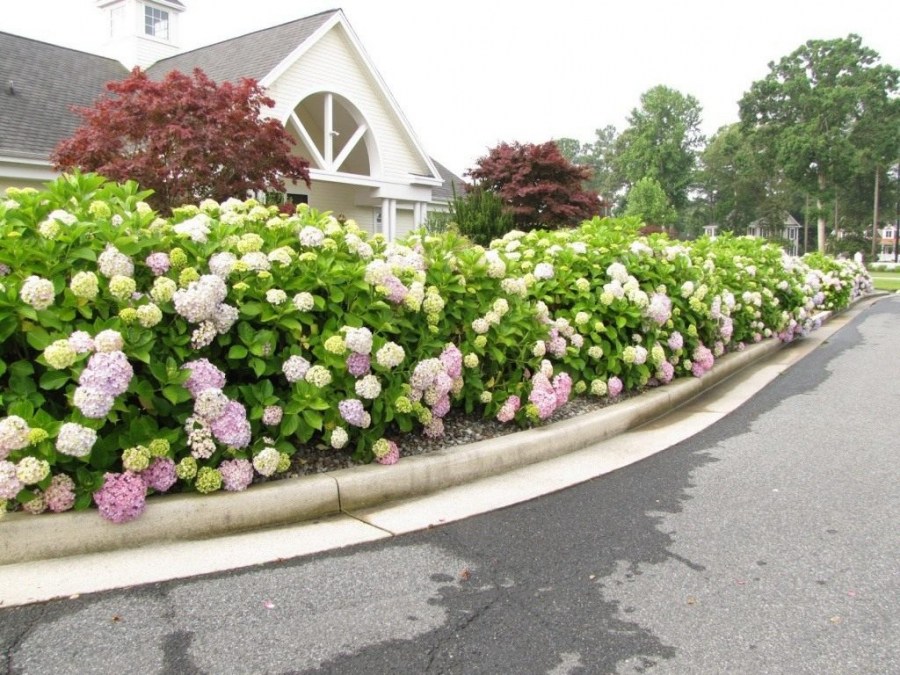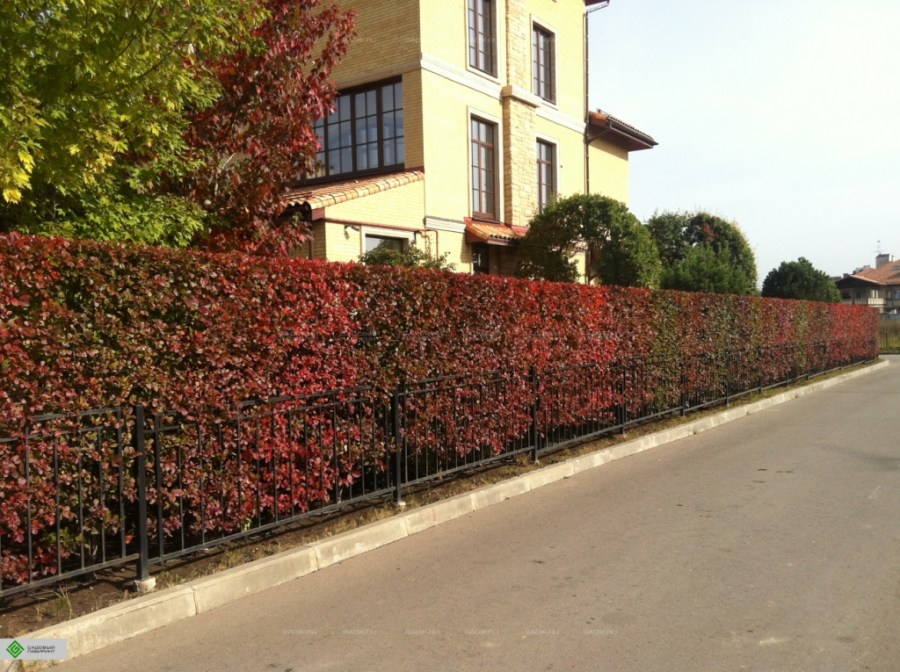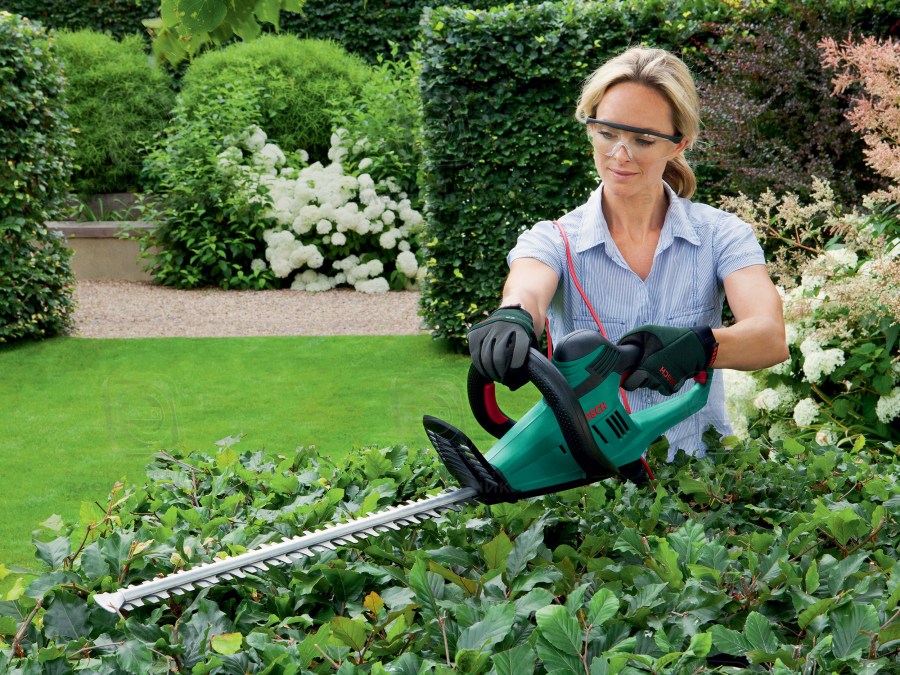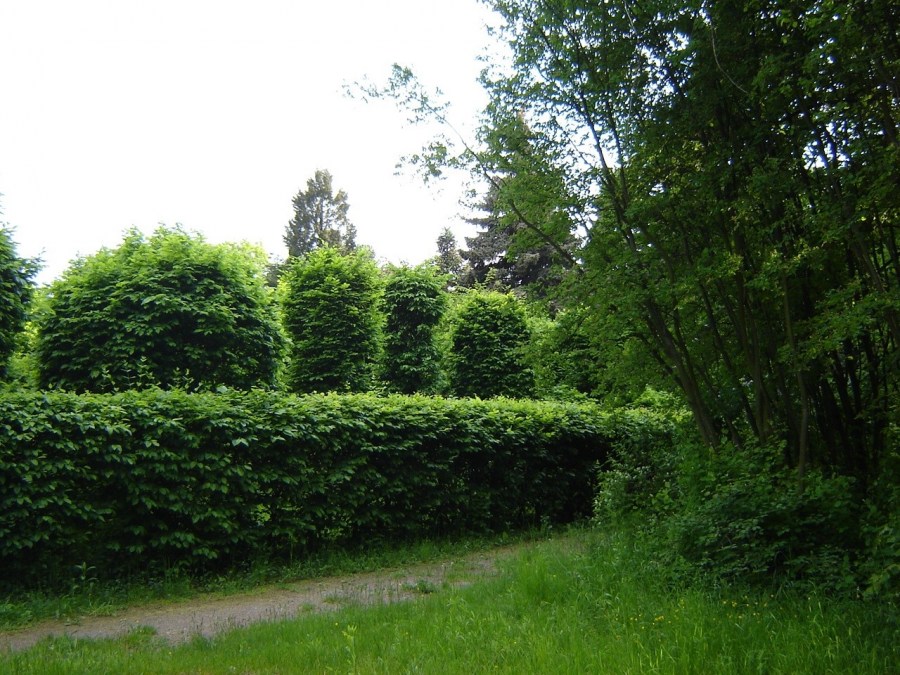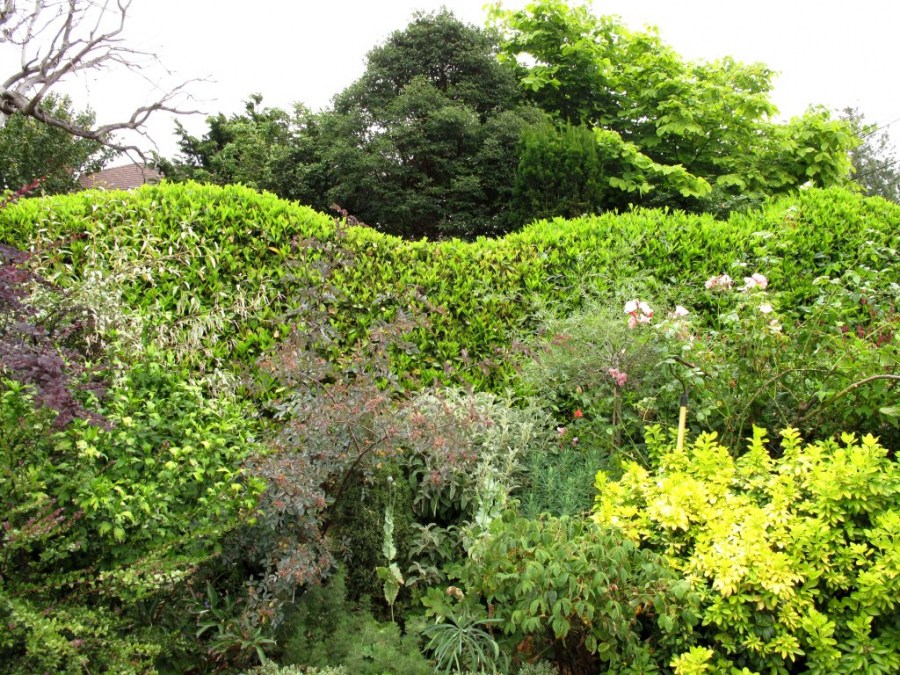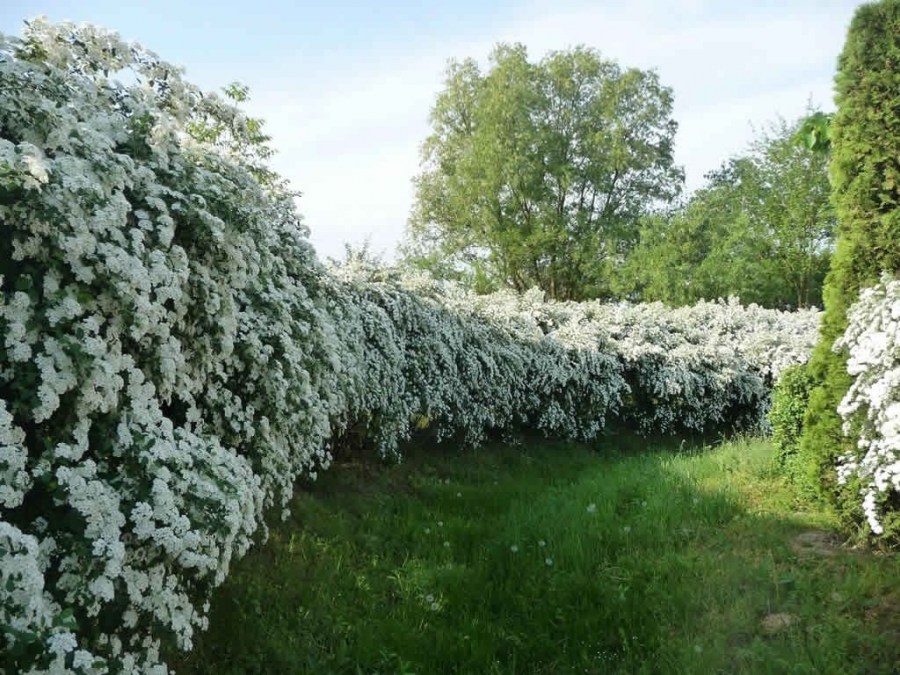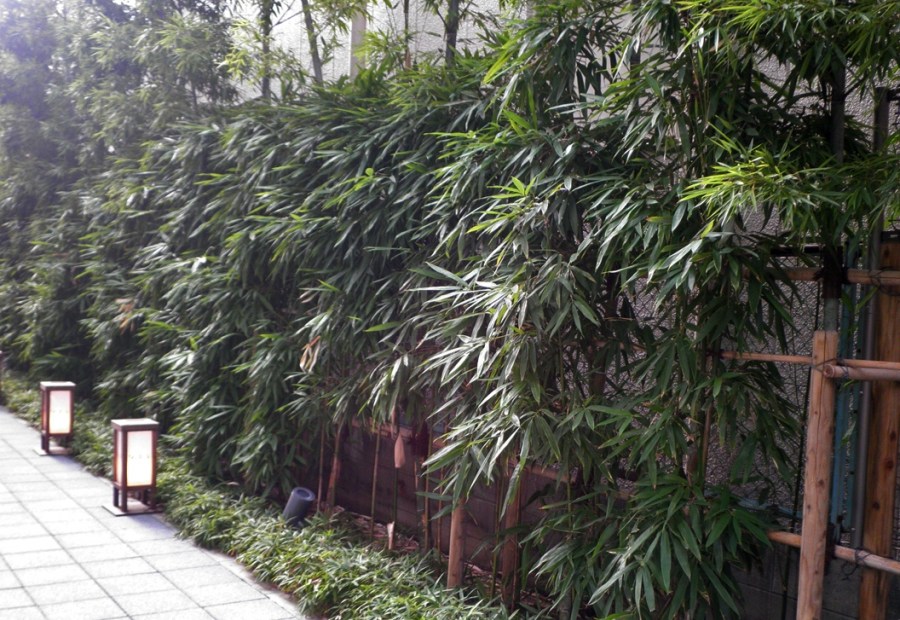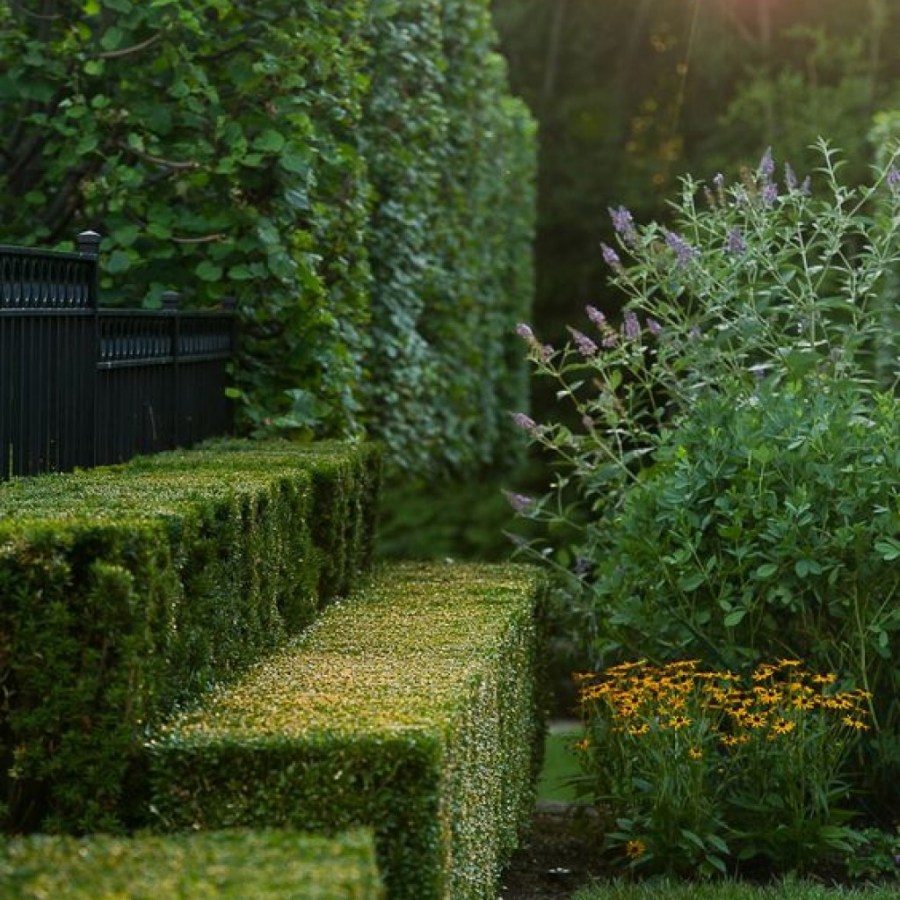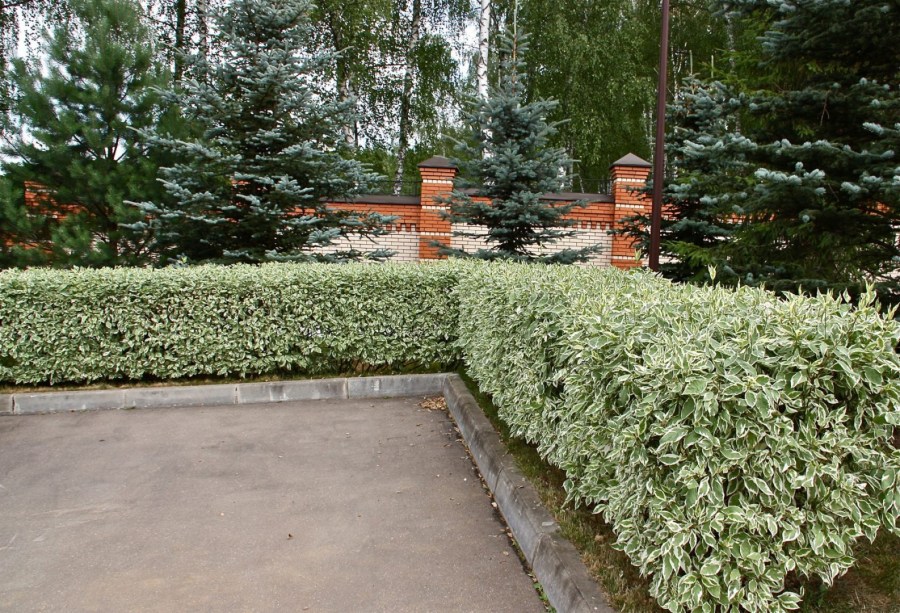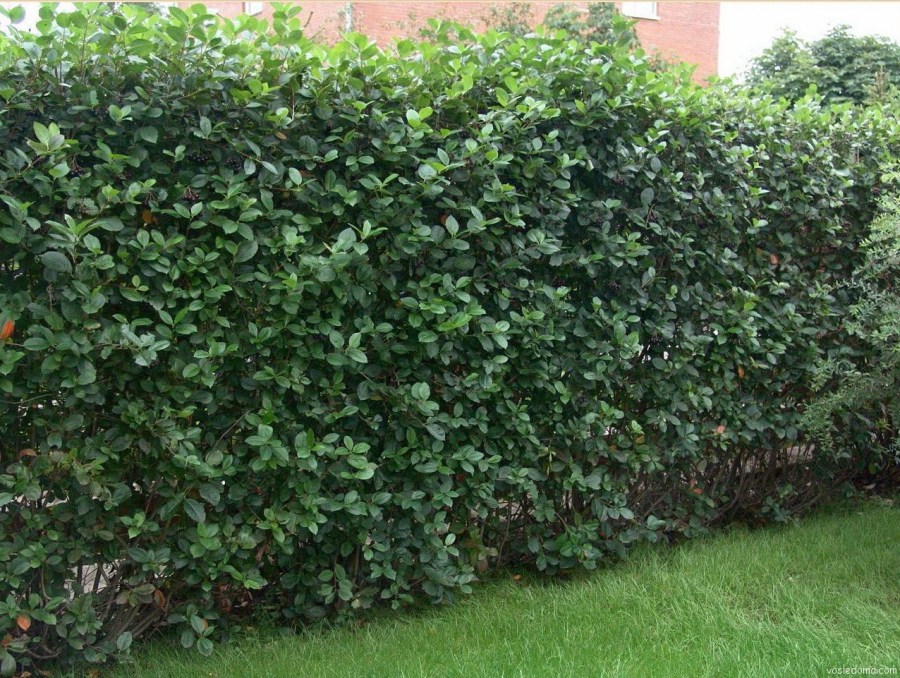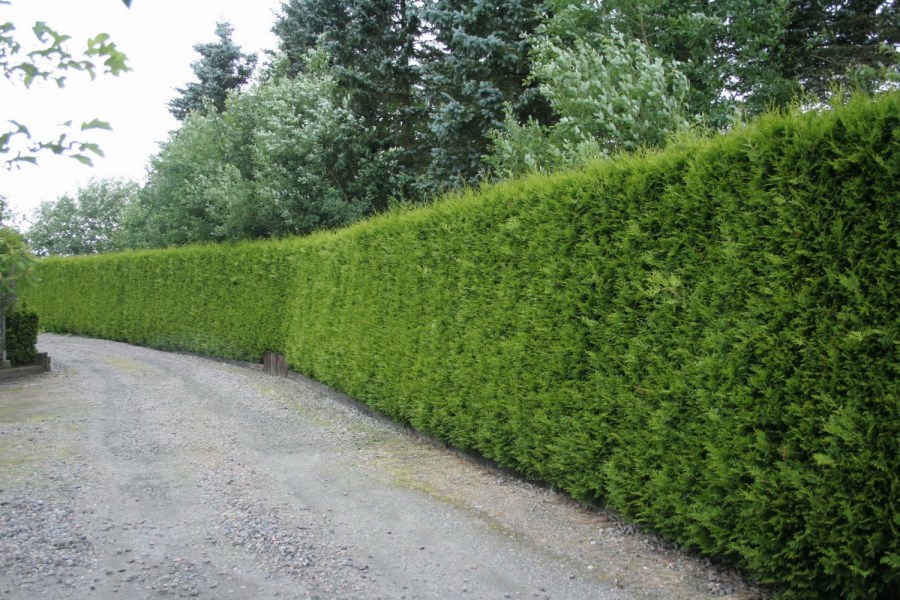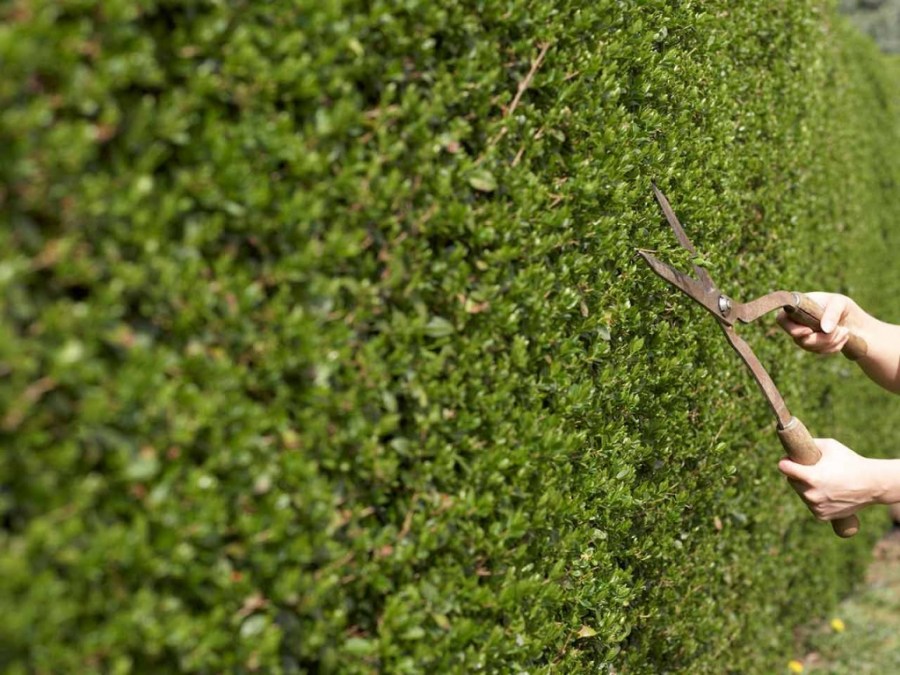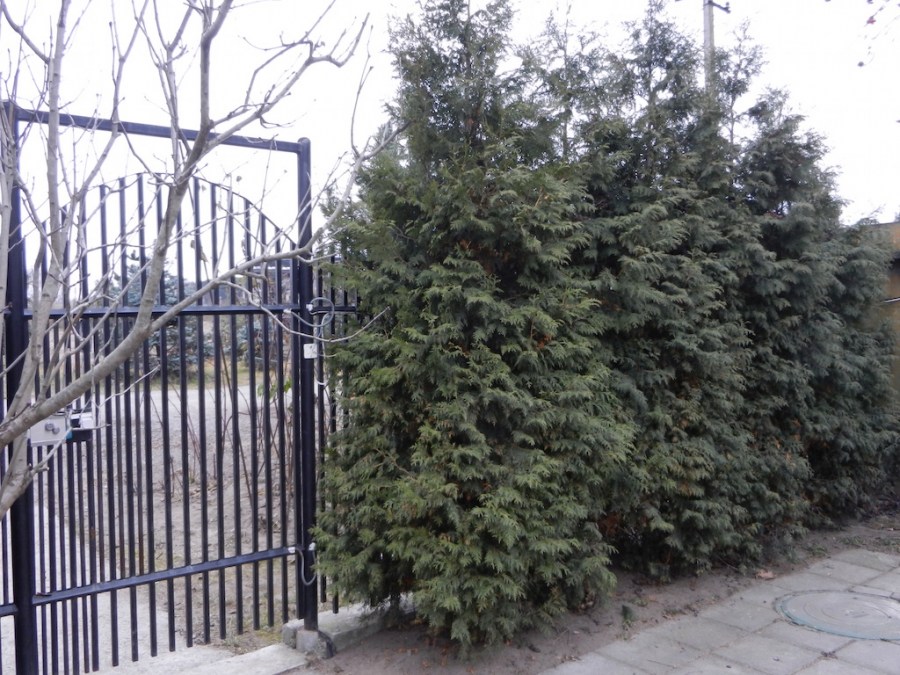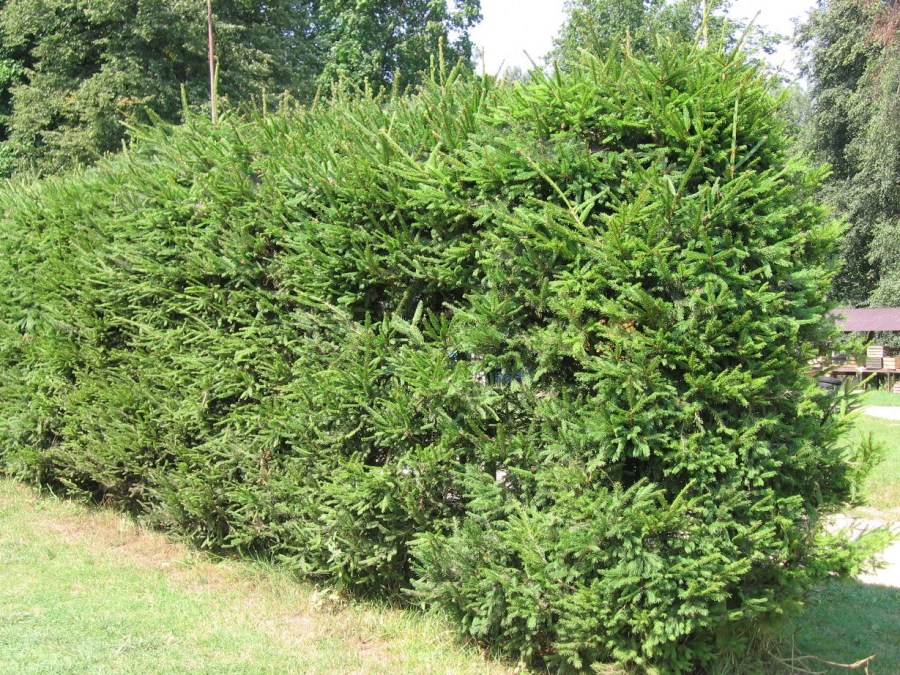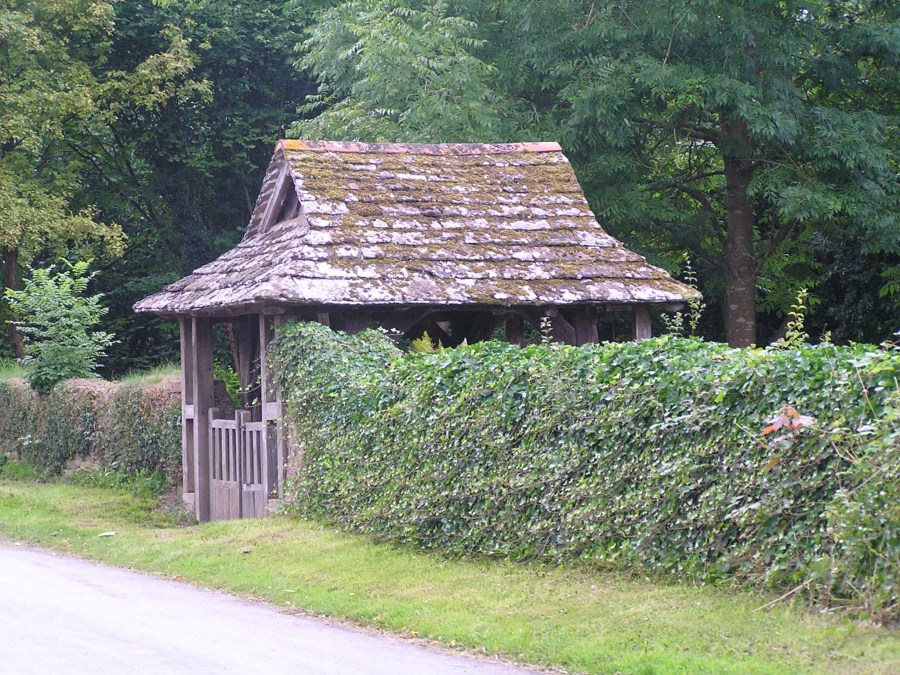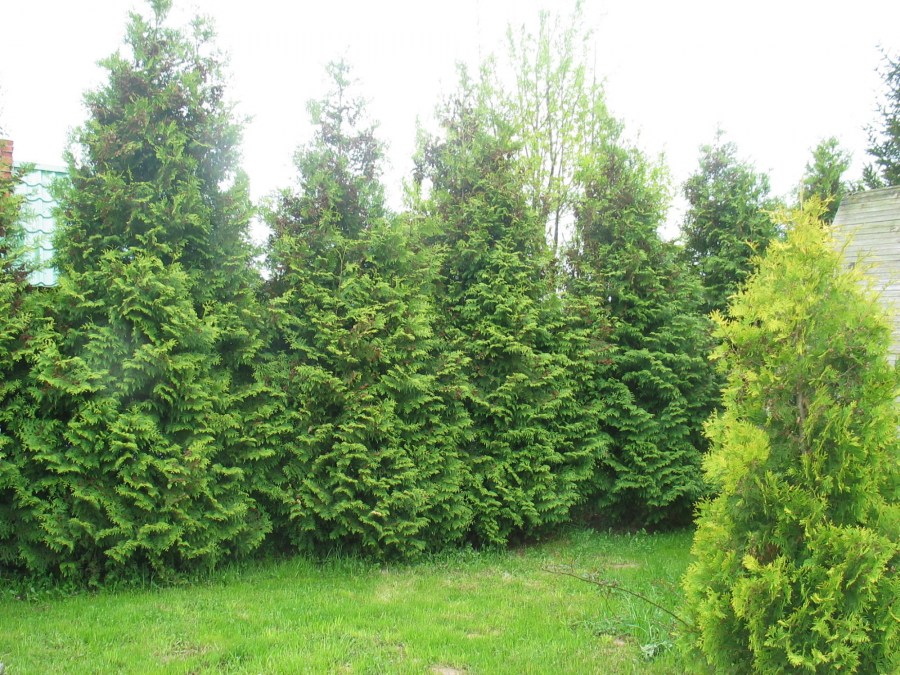Living fence - suitable plants, modern options and design (105 photos)
Almost every landowner dreams and wants his possession to be the most beautiful, original, comfortable. And any possession needs a fence. Now on sale you can find many different options for fences - wooden, metal, concrete, etc. However, the owner’s personality is best emphasized by a lively fence.
The hedge creates a unique atmosphere, comfort, mood on the site. Here you can turn around in full, realize your fantasies, create a unique corner for yourself.
Such a hedge can please and, if you create it from evergreens. This is already a decorative art.
Hedge
Fence - a fence created from various green spaces. A living fence in the country, quite dense, of the right height, width, beauty, can be grown in two to three years. He does not need any painting or repairs, it is enough to trim a couple of times every season. And the fence costs less than a metal or concrete fence.
Living fencing is good because there is where to turn around, create what the soul wants, you can combine plants with, for example, wooden, metal, brick and other structures. The fence can be created either very dense, or - more openwork.
Photos of the living fence that can be created on your site are presented in our article.
Creating a fence from a hedge is an exciting, useful, interesting activity. Such a natural fencing will last for many years with proper care. It’s nice to rest next to him, breathing easily, his mood improves.
Hedgerow - species
A live fence varies in height and plant composition. He can:
- grow freely or be trimmed;
- arranged in one row, several rows;
- consist of one type of plant or from different;
- be solid or translucent, etc.
A high fence - usually above 2.5 meters, is located on the outer border of the site.
Medium - from 1 m to 2, divides the site into different zones, also used along its outer border.
Border - a fence up to 1 m high for different zones on the site: flower beds, lawns, paths, playgrounds.
Fences vary in shape:
- growing naturally and formed. Growing as in nature - do not require any special adjustment, grow naturally;
- formed - need regular pruning; plants give a certain geometric shape.
Hedge Levels and Rows
Multilevel:
- in a row
- in two rows
- in three rows
They land as monopods, also monochrome ones.
Fence in one row - plants are planted in a row at one interval (small bushes - 30-40 cm; medium, with a spreading crown - 50-75 cm; trees - from one and a half meters); it all depends on the type and size of the plants.
Two-, three-row are arranged in a chess-like manner, given how much this or that plant grows.
It must be observed: each next level must be higher than the previous one.With this planting scheme, plants receive more light, air, develop freely, get sick less.
Principles of selecting plants for the fence
- photophilous or shade-tolerant
- hygrophilous or drought tolerant
- compatibility with each other
- the outer row performs security functions
- internal - decorative or useful (you can plant and berries)
- fast growing or slow growing
- sprawling or pyramidal
Live Fence Designs
Natural living fence in the country - plants grow in rows, closing in a continuous strip of the fence.
Climbing plants hedges
They definitely need a wooden frame or mesh netting, you can also use steel wire stretched between the posts.
Climbing plants are let on a wire or a grid - beautiful screens turn out. Suitable: herbaceous or tree-like perennial creepers (such as campsis, hops, honeysuckle-honeysuckle, lemongrass, climbing rose, actinidia-colomicta, ivy, wisteria, clematis, calistegia, Amur grapes).
Screens from winding annuals can be installed every season in different places of the site, for example, they can decorate a living fence that is just starting to grow. Suitable: dolichos, tunbergia, nasturtium, morning glory, decorative pumpkin, sweet peas, kobe, echinocystis.
The place for the hedge must be carefully selected, taking into account the degree of growth of the vines.
Coniferous hedges
When planting conifers, one must take into account that they grow slowly, it will take several years to create such a fence.
Spruce, arborvitae, juniper, yew, various cypress trees, mountain pine are perfect for her. Thuja is the most unpretentious of conifers, loves a haircut, and easily transfers transplants. Of the spruces, Siberian, prickly, bluish, and eastern are suitable.
It is better to plant coniferous young growth in September. The soil should be sufficiently moist and loose, at a distance of not less than a meter, and if the fence is two-, three-row, then between the seedlings should be at least 80 cm.
Cossack juniper (varieties with needles of different colors) forms impenetrable thickets. Virgin - grows quickly, ordinary - for a long time, but can live in the garden for more than 200 years. Resistant to severe frosts, Chinese or scaly junipers branch well.
Yew in the Russian climate is best planted in places protected from the north wind; it is unpretentious, perfect for borders, tolerates pruning well.
The conifers do not bloom, but you can always beat the color of golden, silver, bluish, light and dark green needles.
Deciduous trees and shrubs
Deciduous is deciduous and evergreen, used to create hedges of different heights.
Tall (most often trees: linden, maple, hornbeam, poplar tolerate pruning, resistant to the adverse effects of car exhaust, dust, etc.). Great for hedge background.
Srednerosly - this is such a live fence from the bush (willow, rosehip, hawthorn, barberry, magonia holly, privet, cotoneaster, red and black elderberry, hydrangea arborea, spirea, viburnum, cotoneaster brilliant, lilac, forsythia, Japanese quince, as well as Japanese quince, and boxwood).
Boxwood - evergreen, tolerates a haircut. In winter, it is better to cover it with agrospan or sprinkle it with snow to protect the foliage from winter sunburn.
Border plants for the fence: boxwood boxwood, boxwood, Fortune euonymus, caragana, brilliant honeysuckle, golden currant, heather, low or steppe almonds, shrubby and daurian cinquefoil, dyeing gorse, alpine currant. These shrubs can become the second or third tier in the hedge.
Plants for the border must meet several conditions:
- limited growth
- crown density
- unpretentiousness
- good haircut tolerance
- decorativeness
Borders from undersized shrubs can successfully frame paths in the garden, lawn, playground and other areas of the site.
Tasty and healthy fence
A live fence of edible berries is best arranged inside the summer cottage. If they are planted outside, the owners are unlikely to get the fruits. Suitable: dogrose, viburnum, barberry, chokeberry, felt cherry. And beautiful, and tasty, and healing.
Choose plants for the fence
- plants must be adapted and take root well in a given climate zone
- shadow or photophilous (depends on where they will be planted)
- haircut tolerance or loose fit
- conifers saturate the air with beneficial volatile
- you can alternate conifers with deciduous
- laying an evergreen hedge is best done in April
- Plants can serve not only as a fence, but also as a source of healthy and tasty berries.
Living fence in the country - what to do first?
First of all, it is important to determine the boundaries of the site and the zone inside, to consider whether live fences will be permanent or temporary and the most important thing is that they will cover or delimit.
Then it will become clear - for which zone, for what purpose these or other plants will be needed, where they will need a haircut, and where they can grow freely.
Which plants to choose?
It is best to purchase those that are adapted to these climatic conditions.
Low and curb can be successfully grown from cuttings; the rest is better to get young, not older than 6 years. Plant roots should be fresh, not dry, healthy, and the crown should be comprehensively developed.
How to make a live fence
- determine the support for the hedge of climbing plants
- mark the trenches for planting the desired width (taking into account the number of rows in the hedge)
- we prepare holes for seedlings, if there are several rows - in a checkerboard pattern
- do not forget to do the drainage
- observe the proportions of the distance between plants
- how mulch can be used pebbles of different colors and decorative sand - they will protect the tender young plants from drying out the soil and also - they look very beautiful
Soil and green hedge care
Watering should be moderate, but not excessive - an excess of moisture should not be allowed, as well as drying out of the soil.
Timely top dressing, mulching, regular cultivation will ensure the hedge is in excellent condition, the plants will be beautiful and healthy.
The optimal planting dates are mid and second half of September, so that the plants have time to root well before winter.
Pruning should be done regularly - in the early spring, in the middle of summer, in the middle of autumn.
It is possible to build a hedge only if there is a willingness to constantly monitor the condition of plants, regularly and on time to water, feed, crop.
In general, to make a living fence is simple, inexpensive. However, you need to carefully weigh whether there is enough time, effort and desire to maintain the fence in the right condition so that it pleases the eye and faithfully serves as a beautiful and durable fence.
Live Fence Photo
How to drain a site - step-by-step instructions for creating different types of systems (70 photos)
Apple tree: planting and care. Pruning, treatment for diseases, advice from gardeners
Bathhouse in the country: design, construction and insulation with your own hands (100 photos)
Cherry plum - 115 photos of a tree and its fruits. Landing and Care Recommendations
Join the discussion:
